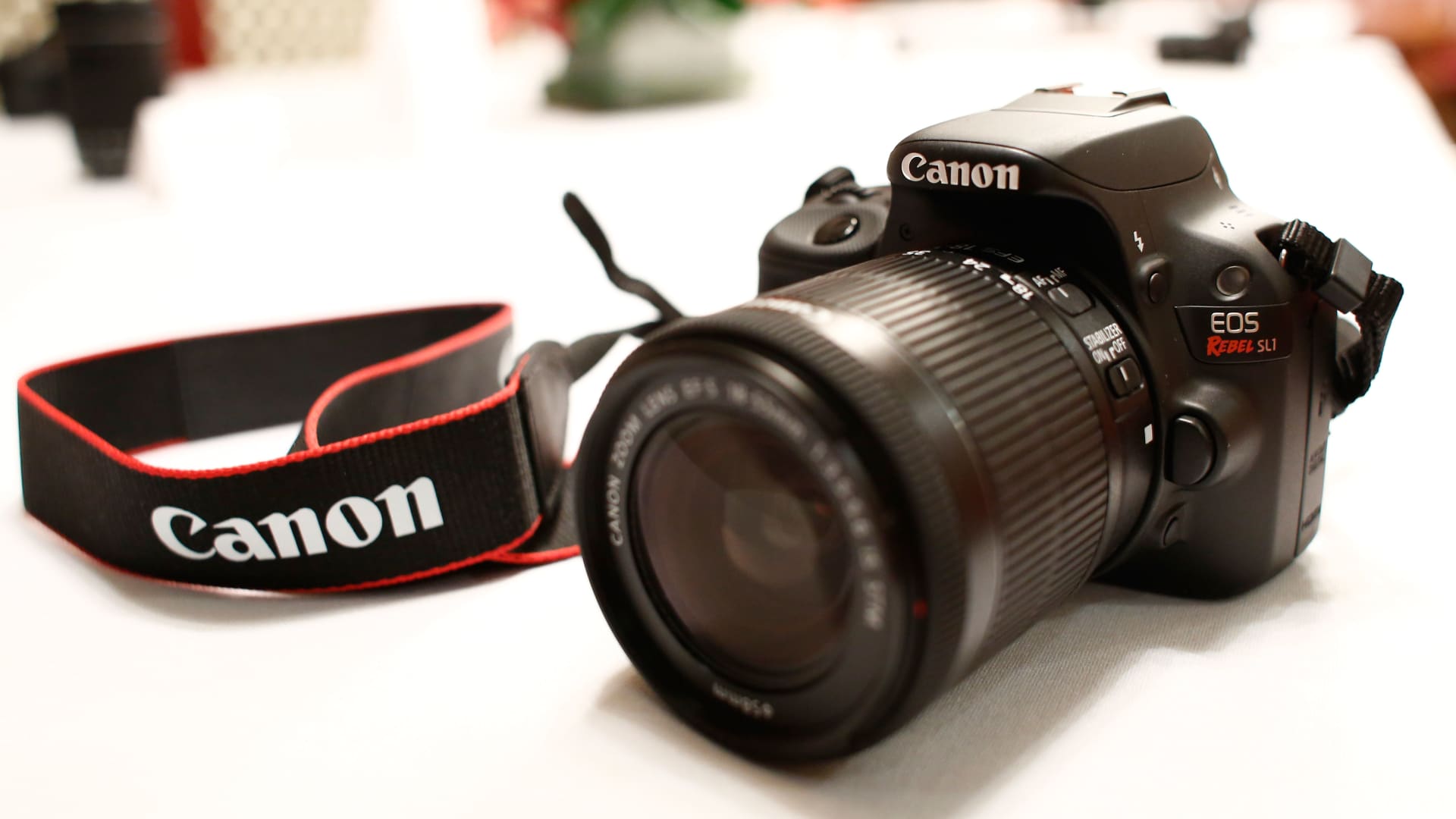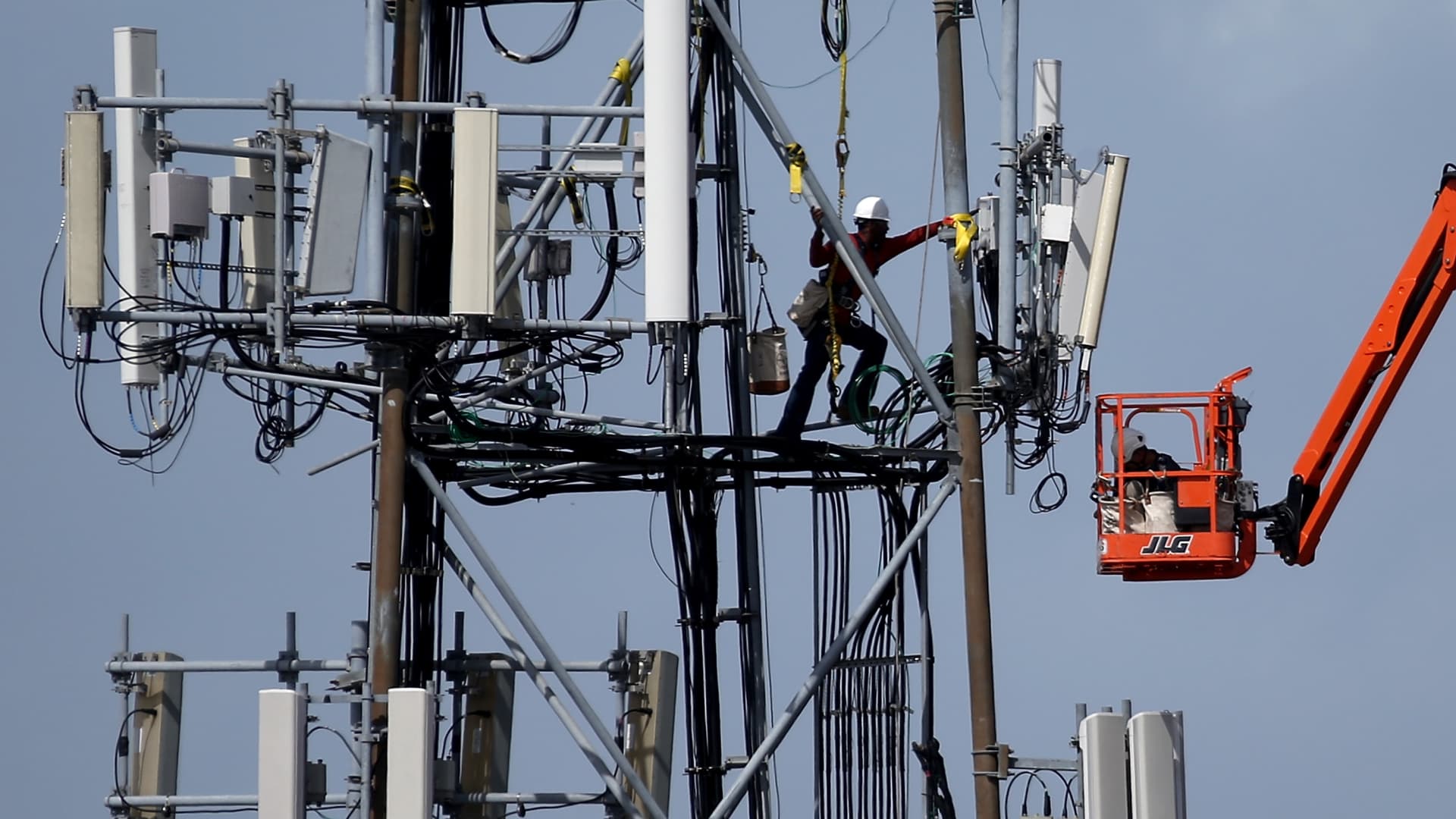
Canon, the Japanese firm well known for its cameras and printers, is ramping up efforts in the semiconductor manufacturing equipment space.
Brian Ach | Getty Images
Canon, the Japanese firm best known for its printers and cameras, launched a critical tool on Friday it says can help manufacture the most advanced semiconductors around.
The latest “nanoimprint lithography” system is Canon’s challenge to Dutch firm ASML, which dominates the extreme ultraviolet (EUV) lithography machine space. ASML’s tools are required to make the most advanced chips such as those in the latest Apple iPhones which are manufactured by Taiwan’s TSMC.
These machines have been dragged into the battle over technology between the U.S. and China.
ASML’s EUV technology has become increasingly popular among the most advanced chipmakers because of its key role in being able to manufacture semiconductors at 5 nanometers and below. The nanometer figure refers to the size of the features on a chip. The smaller that figure is, the more features can fit onto a chip, therefore increasing the power of the semiconductor.
Canon said its latest machine, called the FPA-1200NZ2C, will be able to make semiconductors equivalent to a 5nm process and go as small as 2nm. For context, the A17 Pro chip inside Apple’s iPhone 15 Pro and Pro Max, is a 3nm semiconductor.
Both TSMC and South Korea’s Samsung, the two biggest advanced chip manufacturing companies, are aiming to make 2nm chips in 2025.
Lithography machines are key to effectively print the design of a chip onto the material that ends up going into the semiconductor.
ASML’s machines use ultraviolet light during that process. Canon said its machine does not require a light source with a special wavelength, therefore reducing power consumption.
Canon’s traditional strength in cameras, optical equipment and printers, has seen it renew its focus on the semiconductor supply chain at a time when the world is increasingly in need of chips to power technologies like artificial intelligence.
While the company has been developing its nanoimprint lithography (NIL) technology since 2004, it has not taken off in the world of increasingly complicated chips.
“NIL has been there for more than 20 years, but hasn’t found wide acceptance,” Pranay Kotasthane, chairperson of the high tech geopolitics program at the Takshashila Institution, told CNBC via email.
That’s partly because the EUV machines, like those made by ASML, have worked better during the chip printing process.
Geopolitics in focus
Semiconductors are a central facet of the broader technology battle between the U.S. and China due to their critical nature in areas like AI to military applications.
The U.S., through export restrictions and various sanctions, has sought to cut off China from key chips and manufacturing equipment, holding back the world’s second-largest economy in a technology it is already seen as behind in.
ASML has been restricted by the Dutch government from exporting its EUV lithography machines to China and has not shipped a single unit to the country. The reason is these machines are key to making the most advanced chips.
Now that Canon claims its new machine can help chipmakers manufacture the equivalent of 2nm semiconductors, it will no doubt come under scrutiny.
Canon was not immediately available for comment when contacted by CNBC asking if the company is able to ship this machine to China.
China has struggled to create leading lithography machine companies able to help the domestic industry advance semiconductor manufacturing.
However, Chinese technology champion Huawei released a new smartphone last month that contained a 7nm chip, a feat that was seen as extremely difficult without an ASML EUV machine. This has raised questions in Washington about how it was possible, and thrown export restrictions back into the spotlight.
This month, Reuters reported that the U.S. had warned China about plans to update rules on restrictions regarding the shipment of AI chips and semiconductor manufacturing tools.







![What Is a Markup Language? [+ 7 Examples] What Is a Markup Language? [+ 7 Examples]](https://static.semrush.com/blog/uploads/media/82/c8/82c85ebca40c95d539cf4b766c9b98f8/markup-language-sm.png)